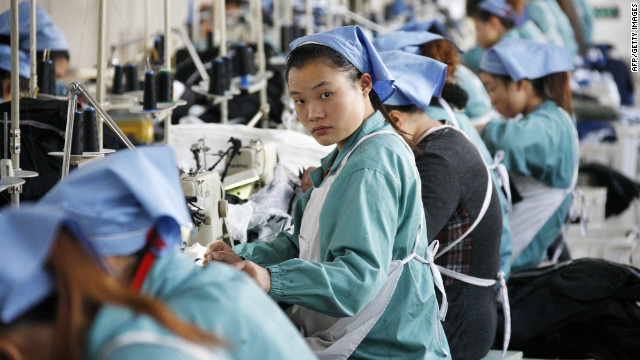|
CNTEX:
Between January and July 2009, China??s textile and clothing exports declined by 11.12% compared with a year ago to $91.464 billion and cotton products exports plummeted 0.97 compared to last month, as demand from all of the nation??s major markets deteriorated.
Cotton textiles led the slump
During the first seven months of the year 2009, China's textile exports plummeted 5.72 percent; garment exports decreased by 5.39 percent.
Looking further into the materials, cotton textiles led the slump, down 5.36 percent from the previous year's period; chemical textiles down 2.42 percent; wool textiles down 0.84 percent; silk textiles down 0.27 percent; and linen textiles down 0.05 percent.
Looking further into the manufactured products, knitted garment & accessories led the slump, down 3.16 percent from the previous year's period; woven garment & accessories down 1.93 percent; special lace down 1.16 percent; chemical filament & textiles down 1.03 percent; cotton textiles down 0.99 percent; chemical staple fibre & textiles down 0.84 percent; wool textiles down 0.42 percent; silk textiles down 0.16 percent; and linen textiles down 0.03%.
Looking further into the export products with an export turnover of above US$100 million, fleece fabric, synthetic filament yarn, embroidery and worsted fabric led the slump, down above 40 percent from the previous year's period. Many Chinese textile and garment enterprises have felt the chill and decided to turn their eyes away from European and American markets and focus back on the domestic market. But, sales in domestic market will not always enjoy a royal road. According to some exporters, to sell products in the home market their business had to go through complex examination and approval procedures to change from its previous corporate identity of an enterprise dedicated to processing materials supplied by overseas clients to a common domestic market oriented venture.
Export price continue to fall
In July 2009 the percentage change in China textile & garment export price index was -1.14% compared to June 2009. Of which, the percentage change in China textile export price index was -0.9% compared to June 2009; the percentage change in China garment export price index was -1.43% compared to June 2009.
Experts attributed the export price index fall to three factors. First, material and energy prices continue to fall. Second, labor costs in China remain stable. Third, demand is not strong enough to offset the surplus supplies.
The high cost of inputs in the textile sector including the Dollar to RMB rate, high cost of power and increasing cost of work force are fuelling the negative sentiments in the textile sector.
Between January-June 2009, the total textile & garment import by US was down 14.29%, of which import from China was down 3.36%, while import from Vietnam in the same period was up 1.5% and import from Bengal in the same period was up 7.78%.
SMEs feeling the chill of crisis
According to data collected from statistics-worthy Chinese textile enterprises surveyed by National Bureau of Statistics, the growth ratio of business operating profit of China's chemical fibre industry increased to 16.5 percent in Jan. - Jul. 2009 from -4.6% in Jan. - Jun. 2009. Industrial added value of statistics-worthy Chinese textile enterprises was up 8.6% year-on-year. The result may demonstrate the statistics-worthy textile enterprises?? ability to generate consistently good profitability, and underscore their confidence that it will enter the recovery period.
On the other hand, a huge amount of small and medium textile enterprises in China are now feeling the chill of crisis due to lack of financial resources, which is a vital ingredient to start off a business. The operators of small and medium textile enterprises need to be trained in managerial skills, which will enable them to recruit, manage, develop and control inter-business activities. There is also the need for organizations to provide a friendly manufacturing environment for the SMEs, as this will reduce the cost incurred during production and also make them have access to the market especially the importation of new technology to enhance standards and quality production.
|
|
China Textile and Apparel Exports Tumbled 11.12% in Jan.-Jul.
Updated: 2009-9-22 Source: english.ctei.gov.cn

Recommended News
Photo Gallery
Most Popular



